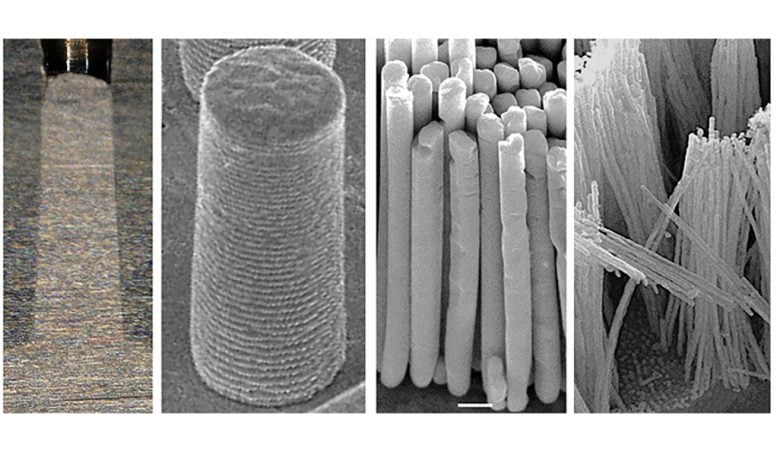
Numerous metals and alloys would be ideal for specific nanoscale applications — from solar energy to microelectronics — but accurately molding metals into such minuscule shapes has proved challenging. Researchers, though, have developed a process that allows manufacturers to essentially shape any metal and alloy and replicate even the smallest details.
The labs of Jan Schroers, professor of mechanical engineering & materials science at Yale, and professor Ze Liu of Wuhan University in China developed a method they call thermomechanical nanomolding that allows them to mold crystalline metals into shapes as small as a few nanometers in diameter. The breakthrough, said the researchers, could lead to new technologies in fields such as sensors, batteries, catalysis, biomaterials, and quantum materials. The results are published on Jan. 22 in Physical Review Letters.
“It’s really a new way of nanomanufacturing,” Schroers said. “Today’s nanomanufacturing relies on a few materials that can be fabricated very specifically for a particular material. But our discovery suggests one technique for all metals and alloys: It allows us to fabricate essentially every metal and its combination in the periodic table in a predictable and precise manner to nano-sized features.”
Molding crystalline metals, which include most metals in their solid state, has generally posed a challenge for manufacturers, said the researchers. How moldable a material is typically depends on its “flowability” — that is, how easily it flows under certain conditions. Flowability is high in thermoplastics, gels, and glasses, but most metals are too hard when solid and too fluid in their liquid states to mold with conventional techniques at the nanoscale.
But by applying atomic diffusion, in which a change in pressures transports the atoms, the research team found that not only could they efficiently mold crystalline metals, but that decreasing the size of the mold actually made the process easier. As a result, they were able to create very long features at about 10 nanometers in diameter — 8,000 times smaller than a human hair — that would previously have been impossible to make.
Because the mechanism of diffusion is present in all metals and alloys, the process could theoretically be used across the board, said the researchers. To test the wide range of applications, the researchers tried molding gold, nickel, vanadium, iron, and numerous alloys. In each case, they could readily fabricate very small nanorods.
Reference: “Nanomolding of Crystalline Metals: The Smaller the Easier” by Ze Liu, Guoxing Han, Sungwoo Sohn, Naijia Liu and Jan Schroers, 22 January 2019, Physical Review Letters.
DOI: 10.1103/PhysRevLett.122.036101